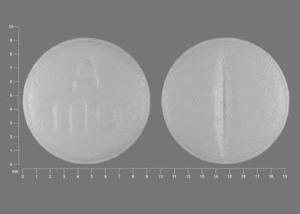Toprol-XL Interactions
There are 545 drugs known to interact with Toprol-XL (metoprolol), along with 19 disease interactions, and 4 alcohol/food interactions. Of the total drug interactions, 28 are major, 478 are moderate, and 39 are minor.
- View all 545 medications that may interact with Toprol-XL
- View Toprol-XL alcohol/food interactions (4)
- View Toprol-XL disease interactions (19)
Most frequently checked interactions
View interaction reports for Toprol-XL (metoprolol) and the medicines listed below.
- amlodipine
- aspirin
- Aspirin Low Strength (aspirin)
- atorvastatin
- Crestor (rosuvastatin)
- Cymbalta (duloxetine)
- Fish Oil (omega-3 polyunsaturated fatty acids)
- furosemide
- gabapentin
- hydrochlorothiazide
- Lasix (furosemide)
- levothyroxine
- Lipitor (atorvastatin)
- lisinopril
- losartan
- metformin
- Nexium (esomeprazole)
- Norvasc (amlodipine)
- omeprazole
- Plavix (clopidogrel)
- prednisone
- Prilosec (omeprazole)
- Protonix (pantoprazole)
- simvastatin
- Synthroid (levothyroxine)
- trazodone
- Tylenol (acetaminophen)
- Vitamin B12 (cyanocobalamin)
- Vitamin D3 (cholecalciferol)
- Xanax (alprazolam)
Toprol-XL alcohol/food interactions
There are 4 alcohol/food interactions with Toprol-XL (metoprolol).
Toprol-XL disease interactions
There are 19 disease interactions with Toprol-XL (metoprolol) which include:
- bradyarrhythmia/AV block
- cardiogenic shock/hypotension
- CHF
- diabetes
- hemodialysis
- hypersensitivity
- ischemic heart disease
- PVD
- liver disease
- cerebrovascular insufficiency
- glaucoma
- hyperlipidemia
- hyperthyroidism
- hyperthyroidism PKs
- myasthenia gravis
- pheochromocytoma
- psoriasis
- tachycardia
- asthma/COPD
More about Toprol-XL (metoprolol)
- Toprol-XL consumer information
- Compare alternatives
- Pricing & coupons
- Reviews (62)
- Drug images
- Side effects
- Dosage information
- During pregnancy
- Generic availability
- Drug class: cardioselective beta blockers
- Breastfeeding
- En español
Related treatment guides
Drug Interaction Classification
| Highly clinically significant. Avoid combinations; the risk of the interaction outweighs the benefit. | |
| Moderately clinically significant. Usually avoid combinations; use it only under special circumstances. | |
| Minimally clinically significant. Minimize risk; assess risk and consider an alternative drug, take steps to circumvent the interaction risk and/or institute a monitoring plan. | |
| No interaction information available. |
See also:
Further information
Always consult your healthcare provider to ensure the information displayed on this page applies to your personal circumstances.


